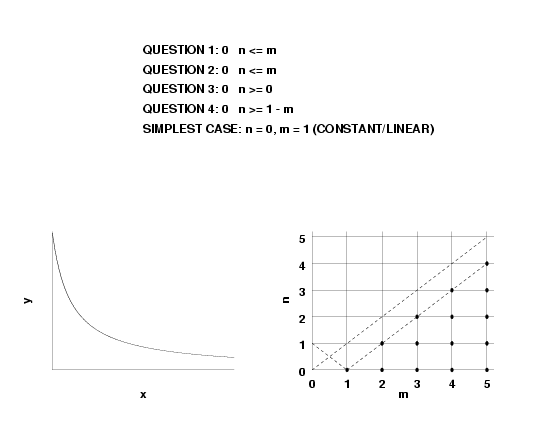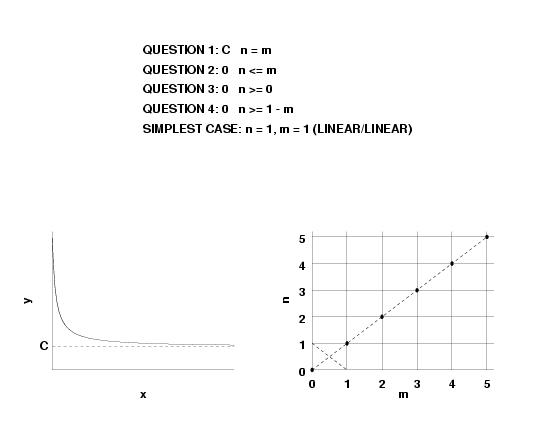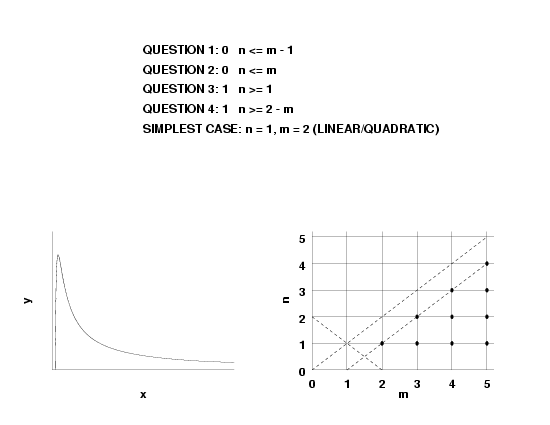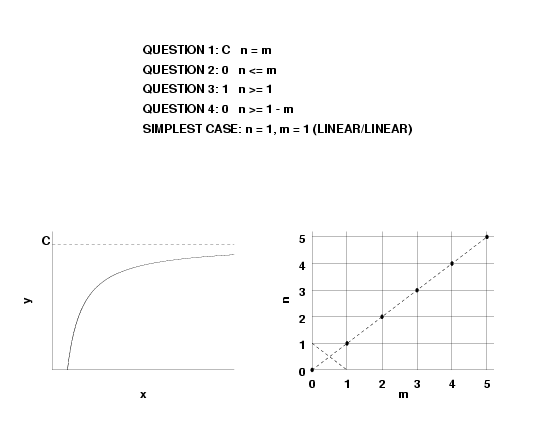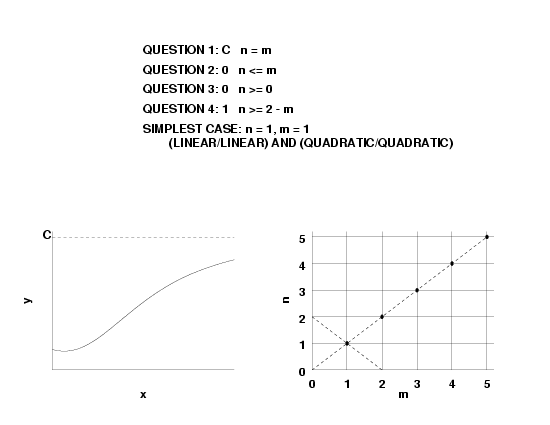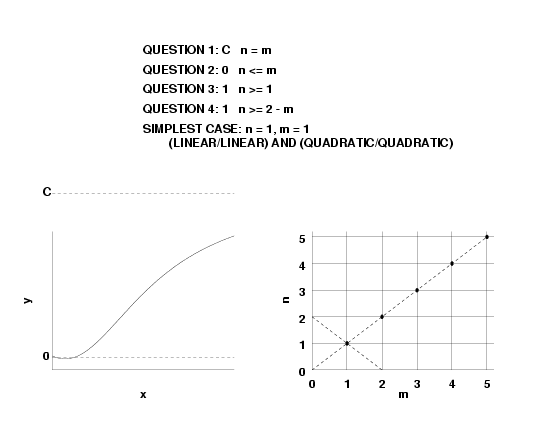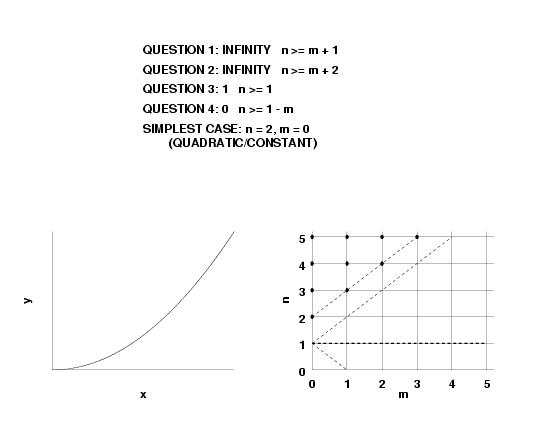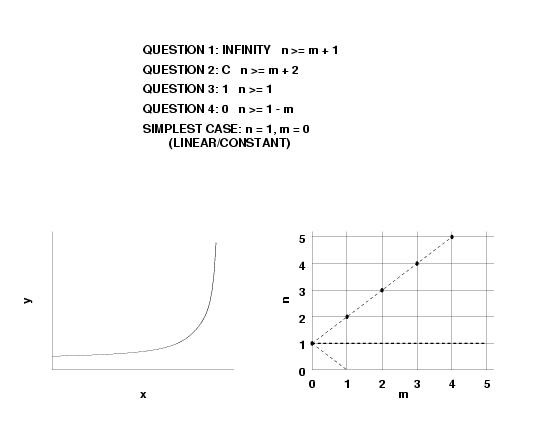-
I have data to which I wish to fit a rational function.
What degrees \(n\) and \(m\)
should I use for the numerator and denominator, respectively?
- What value should the function have at \(x=\infty\)? Specifically, is the value zero, a constant, or plus or minus infinity?
- What slope should the function have at \(x=\infty\)? Specifically, is the derivative of the function zero, a constant, or plus or minus infinity?
- How many times should the function equal zero (i.e., \(f(x)=0\)) for finite \(x\)?
- How many times should the slope equal zero (i.e., \(f'(x)=0\)) for finite \(x\)?
Each of these questions is addressed separately below.
- if \(n \lt m, \, R(\infty)=0\),
- if \(n = m, \, R(\infty) = a_n/b_m\), and
- if \(n \gt m, \, R(\infty) = \pm \infty\).
- \(f(\infty) = 0\), this implies \(n \lt m\).
- \(f(\infty) = constant\), this implies \(n = m\).
- \(f(\infty) = \pm \infty\), this implies \(n \gt m\).
- if \(n < m, \, R'(\infty)=0\),
- if \(n = m, \, R'(\infty) = 0\),
- if \(n = m + 1, \, R'(\infty) = a_n/b_n\), and
- if \(n > m + 1, \, R'(\infty) = \pm \infty\).
- \(f'(\infty)= 0\), this implies \(n \le m\).
- \(f'(\infty) = constant\), this implies \(n = m + 1\).
- \(f'(\infty) = \pm \infty\), this implies \( n > m + 1\).
The numerator polynomial, and thus \(R(x)\) as well, can have between zero and \(n\) real roots. Thus, for a given \(n\), the number of real roots of \(R(x)\) is less than or equal to \(n\).
Conversely, if the fitted function \(f(x)\) is such that, for finite \(x\), the number of times \(f(x)=0\) is \(k_3\), then \(n\) is greater than or equal to \(k_3\).
For \(n \ne m\), the numerator polynomial of \(R'(x)\) has order \(n + m - 1\). For \(n = m\), the numerator polynomial of \(R'(x)\) has order \(n + m - 2\).
From this, it follows that
- if \(n \ne m\), the number of real roots of \(R'(x), \, k_4, \, \mbox{ is } \le n + m - 1\).
- if \(n = m\), the number of real roots of \(R'(x), \, k_4, \, \mbox{ is } \le n + m - 2\).
| 1. Desired value of \(f(\infty)\) | Relation of \(n\) to \(m\) |
|
\(0\) constant \(\infty\) |
\(n \lt m\) \(n = m \) \(n \gt m \) |
| 2. Desired value of \(f'(\infty)\) | Relation of \(n\) to \(m\) |
|
\(0\) constant \(\infty\) |
\(n \lt m + 1\) \(n = m + 1\) \(n \gt m + 1\) |
| 3. For finite \(x\), desired number, \(k_3\), of times \(f(x) = 0\) | Relation of \(n\) to \(k_3\) |
| \(k_3\) | \(n \ge k_3\) |
| 4. For finite \(x\), desired number, \(k_4\), of times \(f'(x) = 0\) | Relation of \(n\) to \(k_4\) and \(m\) |
|
\(k_4 \, (n \ne m)\)
\(k_4 \, (n = m)\) |
\(n \ge (1 + k_4)- m\)
\(n \ge (2 + k_4) - m\)
|
